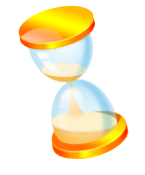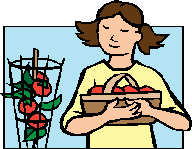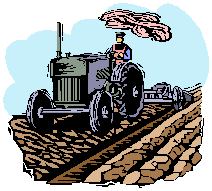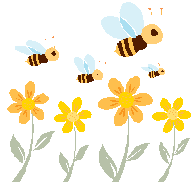

To send a message to an author, click on the author's name at the end of the article.
This Month in Ag Connection | Ag Connection - Other Issues Online
There's a new "bill on the books" - it's called HIRE Act which stands for Hiring Incentives to Restore Employment Act. HIRE was signed into law on March 18, 2010. It contains some important income tax and employment tax provisions. Some provisions that will be of particular interest are the following.
First, Section 179 capital asset expensing will be maintained at the $250,000 maximum deduction level for 2010. You may recall Section 179 was increased to the $250,000 level two years ago as part of a 2008 stimulus package. The 2009 Stimulus Act extended this larger deduction for 2009. Now HIRE is extending the Section 179 at the $250,000 level for 2010. HIRE also extended the phase-out investment level at $800,000. As a reminder - Section 179 can be new or used qualifying assets.

Second, it is important to note the 50 percent first-year bonus depreciation on the purchase of new qualifying assets is not being extended for 2010.
A third provision will be of interest to employers. HIRE provides incentives to encourage employers to add additional employees. HIRE contains a provision that forgives the employer's social security tax liability for individuals employed after March 18, through December 31, 2010. New employees to qualify for this provision:
Additionally, the HIRE act provides employers a credit if they retain these newemployees for at least 52 consecutive weeks. This credit is based on each qualified retained employee is limited to the lesser of: $1,000 or 6.2% of the wages paid to the retained worker during a 52 consecutive week period.
As you might guess, tax professionals are still analyzing and interpreting the language and application of the tax provisions in this new Act - so stay tuned and schedule a visit with your tax professional.
Source: Parman R. Green, MU Extension Ag Business Mgmt. Specialist
This Month in Ag Connection | Ag Connection - Other Issues Online
Breeding season for spring calving beef herds will be here soon. I saw the following information in an electronic newsletter written by Dr. Glenn Selk, Extension Cattle Specialist at Oklahoma State University and thought I'd pass some of the information along.
Dr. Selk recommends that in multi-sire pastures, producers make certain the bulls that will be pastured together have been in a common trap or pasture prior to the breeding season. Bulls WILL establish a social hierarchy. It is better to get this done before the breeding season begins rather than wait until they are first placed with the cows.
He also advises to put young bulls with young bulls and mature bulls with mature bulls. Mixing the ages will result in the mature bull dominating the younger bull completely, and in some instances causing a serious injury. If the plan is to rotate bulls during the breeding season, then use the mature bulls first, and follow with the yearling bulls in the last third of the breeding season. This way the young bulls will have fewer cows to settle and will be 1 - 2 months older when they start breeding.
A conservative rule-of-thumb, for young bulls, is to place them with roughly the same number of females as is his age in months. For Example:
The use of synchronized AI programs can also impact cow:bull ratios. Females not conceiving to AI will still be grouped when they return to estrus approximately 21 days after the AI date. Be sure to have enough bull power on hand to take care of this situation.
Source: Gene Schmitz, MU Extension Livestock Specialist
This Month in Ag Connection | Ag Connection - Other Issues Online
You might be asking yourself if producing a garden is worth all the time and effort. For a growing number of people, the answer is yes. In an era when many businesses are failing, garden seed companies are reporting record sales. One big reason is that more and more families are turning to vegetable gardening to save on their food bills, enjoy high-quality produce and reap the health benefits that come from outdoor activity.

A report from the National Gardening Association estimates that a well-maintained food garden can yield about a half-pound of fresh produce per square foot, worth about $2 per pound at in-season market rates. The NGA estimates that American food gardeners grow more than $21.6 billion in produce each year.
It doesn't take a big investment to start growing your own produce. You don't need to spend $500 on a raised bed filled with artificial growing medium to benefit economically from gardening. According to NGA, in 2008 the average 600-square-foot food garden produced a return of $530 on an average investment of just $70.
Of course, you have to provide the labor, but even that has its rewards. The digging, hoeing and raking that go with gardening are great forms of exercise that can reduce stress levels as well as your waistline. With fresh fruits and vegetables right outside your door, you might start eating a little better too.
The bottom line is not how you garden, it's if you garden. It makes little difference whether your garden is organic or non-organic, raised bed or conventional, hydroponic or soil-based. There is no one best way to garden as long as you do it.
Source: David Trinklein, State MU Extension horticulture specialist
This Month in Ag Connection | Ag Connection - Other Issues Online
Planting season is here and many fields may still be plenty wet, meaning less than ideal conditions for planting. Wet soils are easily compacted and sidewall compaction during planting can be a problem, especially if the crop is "mudded in" and a dry spell occurs after planting. Patience is required for waiting for the soil to dry, but if the next rain is coming or the yield penalty for late planting is growing, it's hard to wait.
Many factors contribute to sidewall compaction. While wet soil is often given as the main reason, planting too shallow is the primary problem. In most conditions, corn seed should be planted 2 to 3 inches deep for proper root development. Most corn planters were designed for this planting depth, especially those with angled closing wheels. When you properly close the seed-vee, the sidewalls of the furrow should be fractured as the soil closes around the seed, eliminating the sidewalls and providing seed-to-soil contact.

Most sidewall compaction problems on wet soils occur when the press wheels are set with too much downpressure, overpacking the seeds into the soil. When planting shallow, this press wheel compaction is below the seeding depth, making it difficult for the seedling roots to penetrate the soil. If you look at the angled press wheels from the rear, they intersect at an imaginary point about 2 inches below the soil surface. This provides seed-to-soil contact at seeding depth while closing the seed-vee. As such, downpressure on the press wheels should be checked at seeding depth, not at the top of the seed-vee. If the seed-to-soil contact is adequate, don't tighten the downpressure springs trying to close the seed-vee. Make sure that the planter is properly leveled, or even slightly tail down, for the angled closing wheels to have a pinching action to close the seed-vee.
A variety of attachments are available to help close theseed-vee if the standard closing devices cannot. Some people use coulters or intermeshing row cleaners to till the soil in front of the planting unit to provide loose soil for closing the seed-vee. However, this loosened soil often sticks to the depth gauge wheels in wet conditions or the tillage dries out the seed zone in dry weather. A better way to provide loose soil for closing the seed-vee is to do it after the seed has been placed in the furrow. Two options exist for this purpose, the Schaffert* Furrow V Closer does that in front of the standard press wheels. The other option is spoked closing wheels to replace the standard press wheels with ones that till in the sidewall around the seed.
The less aggressive spoked wheels provide some seed-to-soil contact while closing the seed-vee and reducing air pockets around the seed. The more aggressive spoked wheels tend to dry the soil more and typically require a seed firmer to provide seed-to-soil contact and a drag chain behind them to level the soil. As the soils become drier and more seed-to-soil contact is needed, some producers remove the spoked wheels and put the standard closing wheels back on to reduce overdrying the seed zone. If the downpressure is set too high on some of these spoked wheels, they may "till" the seed out of the seed-vee. To reduce the aggressiveness of the tillage and to provide some soil firming and depth control, some producers run one spoked closing wheel and one standard wheel. This combination works well in a wide variety of conditions.
While the seed furrow closing devices are important, too much downpressure on the depth gauge wheels will also create sidewall compaction as the disk openers form the seed furrow. The disk openers may create some sidewall smearing while pushing the soil outward to form the seed-vee. If there is too much downpressure on the depth gauge wheels, they will pack the soil downward at the same time, causingcompaction that may be too dense for the closing devices to fracture. When this occurs, producers typically put more pressure on the press wheels trying to close the seed-vee, making the compaction around the seed worse yet. Downpressure on both the row unit (depth gauge wheels) and the press wheels should be reduced in wet soil conditions.
Another contributor to sidewall compaction is the lack of soil structure in many tilled fields. Producers may put extra pressure on the closing devices to close the seed-vee when in wet conditions. Without soil structure, the standard closing wheels "pinch" the sidewalls closed over the seed, particularly in heavier soils. However, as the soil dries, it shrinks and the seed-vee may open back up, exposing the seeds. This often occurs when there is a hot, windy period after planting, drying out the seed zone and reducing the stand. This is less of a problem in higher organic matter soils and in continuous no-till soils with improved soil structure. If the angled closing wheels can be remounted, one in front of the other, this will reduce the pinching effect and compaction over the seed. If there is a dry layer on top of the soil at planting time and good soil moisture at planting depth, don't use residue movers or furrow openers to remove the dry soil because it has already shrunk. Also, when possible, leave residue over the row to reduce drying of the soil and protect the seed zone from raindrop impact.
This information was obtained from an article written by Paul Jasa, Extension Engineer - University of Nebraska.
* Mention of brand names is for identification purposes only. Endorsement is not implied, nor is criticism intended of those not mentioned.
Source: Kent Shannon, MU Extension Natural Resource Engineering Specialist
This Month in Ag Connection | Ag Connection - Other Issues Online
Populations of pollinating insects have declined over the past several years for a number of reasons, including pesticide use.While eliminating the use of pesticides may not be feasible, there are some things that can be done to use pesticides more safely and protect insect pollinators.

Remember that most insecticides are highly toxic to bees and other pollinators. While it may not be possible to get by without using insecticides, utilizing the above options will make it safer for these beneficial insects.
Source: Travis Harper, MU Extension Agronomy Specialist
This Month in Ag Connection | Ag Connection - Other Issues Online
Publishing Information
Ag Connection is published monthly for Northeast and Central areas of Missouri producers and is supported by the University of Missouri Extension, the Missouri Agricultural Experiment Station, and the MU College of Agriculture, Food and Natural Resources. Managing Editor: Mary Sobba.